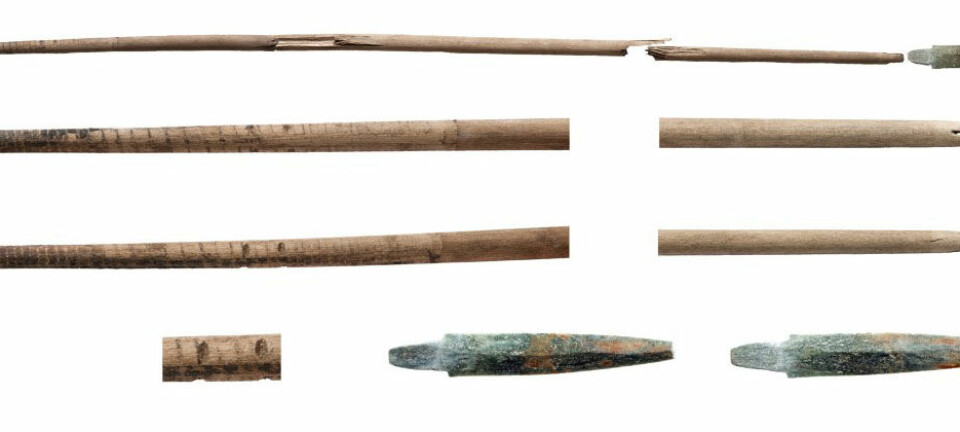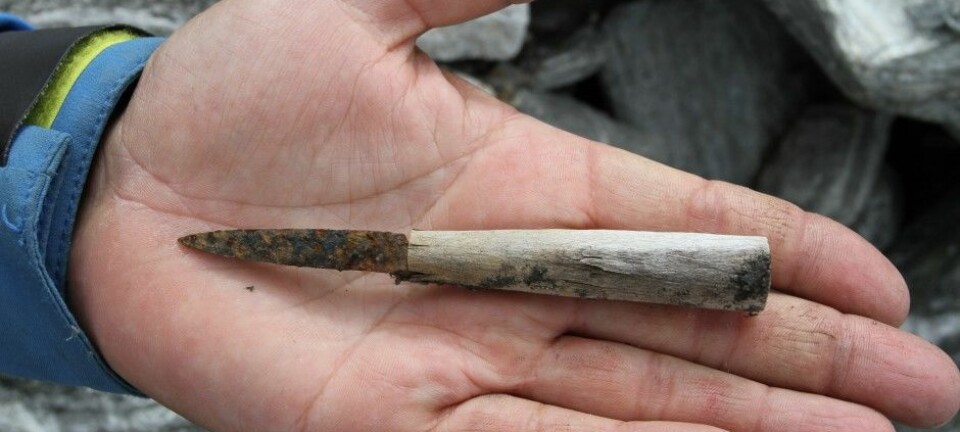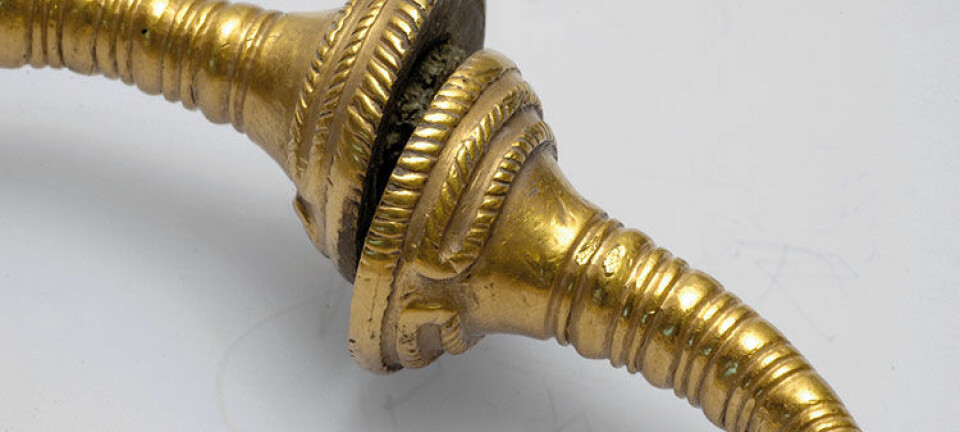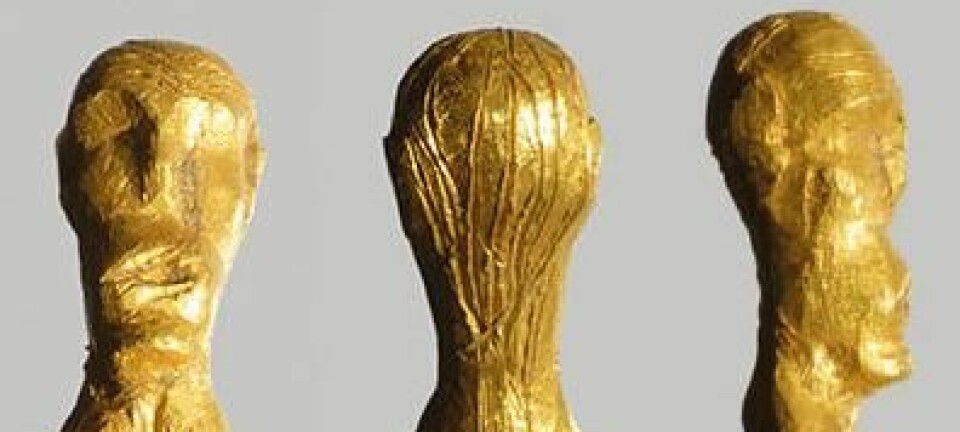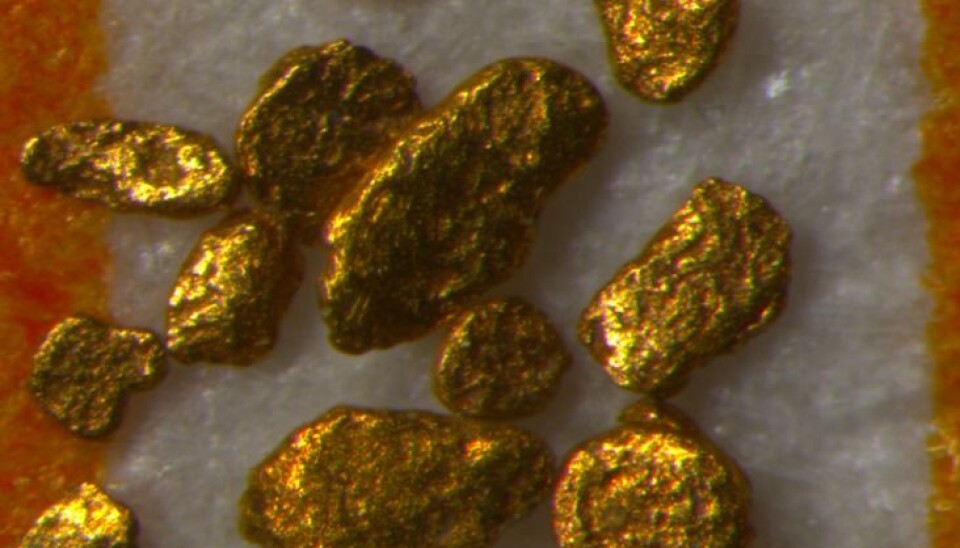
Gold deposits found in Denmark
Ice Age rivers have deposited gold in gravel pits throughout Denmark, says geologist.
When Christian Knudsen, a geologist and senior researcher from the Geological Survey of Denmark and Greenland (GEUS), was analysing samples from a gravel pit in Rødekro, southern Denmark, he made a surprising discovery: gold.
"When the owner of the gravel pit told me there was gold near Rødekro I was sceptical,” says Knudsen, who has previously found gold in Greenland.
His scepticism was not without reason. Other minerals often get confused with gold but this time it turned out to be right enough.
“There actually is gold in southern Jutland," says Knudsen.
Ice Age brought the gold to Denmark
According to Knudsen, the gold was transported to Rødekro during one of the most recent ice ages.
Huge glaciers have rolled across parts of northern Europe several times and as they were expanding they scraped off minerals and metals from the Scandinavian mountains and carried them southwards.
As the glaciers melted, rivers formed and these rivers collected clay, sand, gravel, rocks, and grains of gold from the melting ice and deposited it all in front of the glacier in what is known as the percolation zone where the melt water flows out.
In the percolation zone, where the melt water gushed out of the glacier, the coarsest materials -- that is rocks and heavy gravel -- were deposited while the smaller grains of sand were deposited further to the west.
Grains of gold are very heavy so they were deposited together with the course material in front of the glacier.
In this case, the percolation zone lay near Rødekro, which became a gravel pit and some gold dust richer when the ice melted.
"The gold is mixed up with gravel and rocks from a very large area so the concentration of gold is likely to be very small here, although we haven't gotten as far as measuring the concentration yet,"
"If the pre-requisites for finding gold have been present in Rødekro, gold might just as well be found in gravel pits in the rest of Denmark," says Knudsen optimistically.
Surprisingly simple to find gold
In his search for gold, Knudsen took a sample from a place in the gravel pit near Rødekro where it was probable that the gold would have been concentrated during handling of the gravel.
He then sifted the gravel, subsequently putting the finest sand on a vibrating table, on which water flows over a series of ridges while the table is shaken.
In this way, the lightest grains of sand are carried away by the water while the much heavier gold is left behind between the ridges.
"It was fascinating to see the fine little stripe of gold that was left on the table when the exercise was complete," says Knudsen.
Rocks tell us where the gold came from
The next step in Knudsen's gold adventurers is to find out where the gold originally came from.
To do that he will examine the composition of the grains of gold, which also contain small quantities of other metals.
"Grains of gold have a signature defined by the content of other metals from the time the grains formed. I will compare the signatures of my grains of gold with the signature of gold found in various places in Sweden and Finland to see if I can find match," says Knudsen.
He will also look at the other types of rock that were deposited near Rødekro along with the gold.
Knudsen remarks:
"Before everybody in Denmark storms gravel pits across the country we should point out that gravel pits are private property and are dangerous places to go. In addition to that the gold is likely to be in such small concentrations that we have to look in the right places with just the right equipment to find anything."
-----------------
Read the original story in Danish on Videnskab.dk
Translated by: Hugh Matthews
